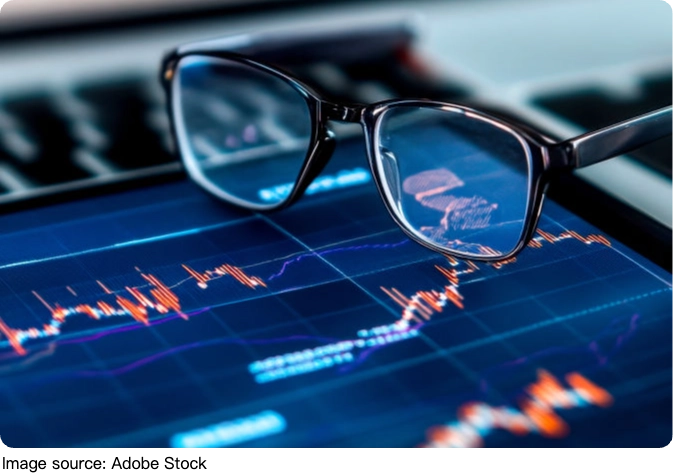Visual Risk Control

Hey Lykkers! Have you ever stared at a stock chart and wondered how professional investors seem to "predict" market ups and downs? Here's the secret: they aren't psychic—they rely on investment analysis graphics to manage risk.
In the world of investing, understanding how to interpret charts, graphs, and data visuals isn't just helpful—it can protect your money and maximize returns. Let's dive into how you can use these tools effectively.
What Are Investment Analysis Graphics?
Investment analysis graphics are visual representations of market data. They include line charts, candlestick charts, bar graphs, heatmaps, and trend indicators. These visuals show patterns in price movements, trading volumes, and market volatility over time. For investors, they turn abstract numbers into actionable insights, helping to spot opportunities while avoiding costly mistakes.
How Graphics Help With Risk Management
Risk management is all about minimizing losses while protecting potential gains. Here's how investment graphics play a key role:
1. Identifying Market Volatility
Charts can reveal periods of high and low volatility. A sudden spike in price movement may signal increased risk, while stable trends suggest lower uncertainty. Investors can adjust their strategies accordingly, perhaps reducing positions during turbulent periods.
2. Spotting Trends Early
Using trend lines and moving averages on charts allows investors to detect upward or downward momentum. Recognizing trends early helps manage risk by informing decisions about entry and exit points.
3. Diversifying Portfolios
Visual analytics highlight correlations between assets. If two stocks move in the same direction consistently, investing in both could increase risk. Graphics help identify opportunities for diversification, reducing overall portfolio exposure.
4. Setting Stop-Loss and Take-Profit Levels
By analyzing historical price patterns, investors can determine logical stop-loss points to limit losses and take-profit points to lock in gains. Visual data makes these decisions more precise and less guesswork-driven.
Tools and Techniques for Effective Analysis
Several analytical tools and techniques are essential for leveraging graphics in risk management:
- Candlestick Patterns: Identify potential reversals or continuation trends.
- Moving Averages: Smooth out price data to see long-term trends.
- Bollinger Bands: Measure volatility and potential price breakouts.
- Heatmaps: Show asset performance at a glance and highlight risk areas.
- Correlation Charts: Reveal relationships between multiple investments to inform diversification.
According to research from the CFA Institute, investors who combine technical chart analysis with risk management strategies are better able to reduce portfolio drawdowns and maintain stable returns, especially during volatile markets.
Real-World Applications
Consider a trader monitoring technology stocks. By using candlestick charts and Bollinger Bands, they notice a stock approaching a resistance level while trading volume spikes. Recognizing potential reversal, the trader can reduce their position, mitigating risk.
Meanwhile, visualizing correlations with other tech stocks helps diversify exposure, protecting the portfolio from a single stock's poor performance.
Similarly, fund managers use heatmaps to assess entire portfolios, identifying underperforming sectors and rebalancing assets before losses accumulate. This proactive approach is only possible through the insightful use of investment graphics.

The Bottom Line
Lykkers, investment analysis graphics aren't just pretty charts—they are powerful tools for risk management. They help investors understand market behavior, anticipate volatility, make informed decisions, and protect their portfolios from unnecessary losses.
Whether you're a day trader or a long-term investor, mastering the use of charts, trend lines, and visual data can make the difference between smart investing and guesswork.
By combining analytics with strategic planning, you can navigate financial markets with confidence, spot opportunities early, and minimize the risks that every investor inevitably faces.
-
 Pets Without BordersWhy more people are adopting pets across countries—and what to know before bringing a furry friend home from abroad!
Pets Without BordersWhy more people are adopting pets across countries—and what to know before bringing a furry friend home from abroad! -
 Animal Behavior StoriesExplore fascinating cross-cultural animal behaviors and what they reveal about intelligence!
Animal Behavior StoriesExplore fascinating cross-cultural animal behaviors and what they reveal about intelligence! -
 Glass Clarity Secrets!Why Can You See Right Through Glass?! Hidden Science Or Just Light Tricks?! Clear Enough?!
Glass Clarity Secrets!Why Can You See Right Through Glass?! Hidden Science Or Just Light Tricks?! Clear Enough?!